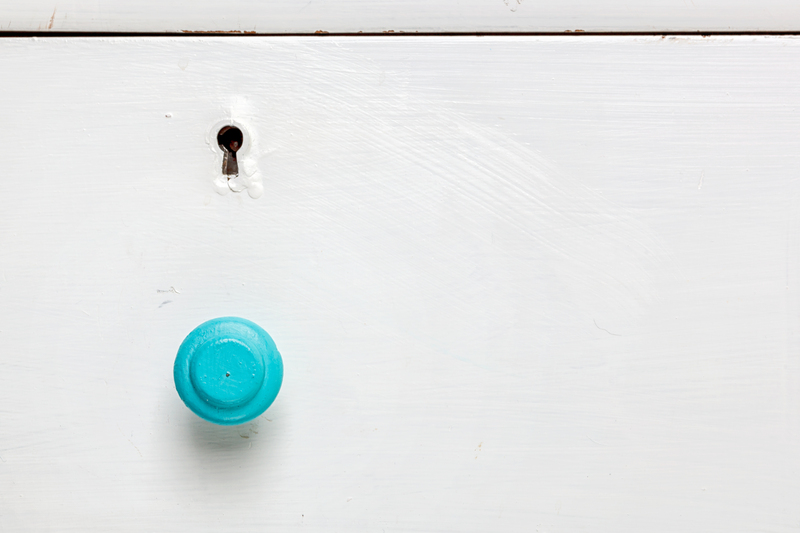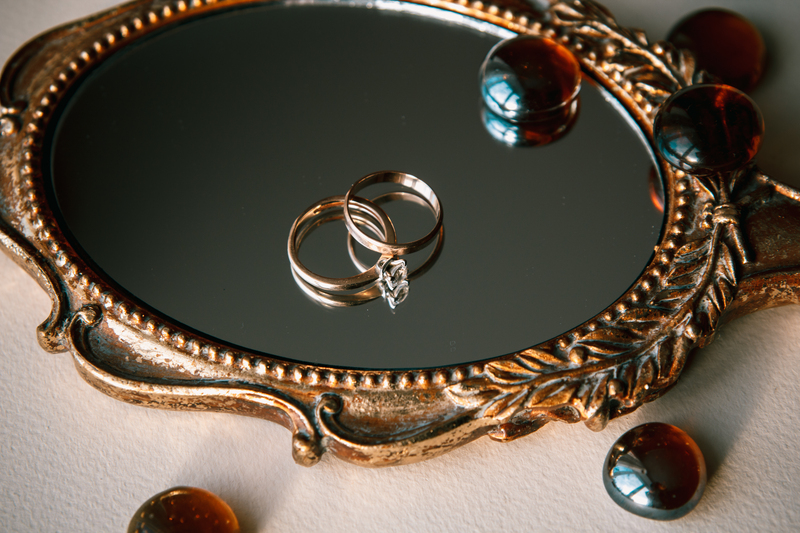What to Do With Pots and Pans You No Longer Need: A Comprehensive Guide
If your kitchen cabinets are overflowing with old pots and pans that you no longer use, you're certainly not alone. As we upgrade our cookware or receive gifts, our collection of mismatched and worn-out saucepans, skillets, and lids tends to grow. But simply tossing these kitchen essentials in the trash isn't eco-friendly or responsible. So, what should you do with your unwanted cookware? This comprehensive guide explores creative, sustainable, and community-focused solutions for giving new life to pots and pans you no longer need.
Why You Shouldn't Just Throw Away Old Pots and Pans
Before delving into disposal and repurposing methods, it's important to understand why you shouldn't simply toss your old cookware in the garbage. Most pots and pans, even when damaged or nonstick coating is worn, don't belong in your regular trash. Here's why:
- Landfill Waste: Cookware is bulky and non-biodegradable, putting strain on landfills.
- Environmental Impact: Many pots and pans contain metals and coatings that can leach into soil and water when improperly discarded.
- Lost Opportunities: Many materials in your cookware, such as aluminum and stainless steel, are highly recyclable. Others may be perfect for reuse.
Responsible disposal reduces environmental harm and supports a circular economy. Now, let's look at the many ways to deal with unwanted cookware.

1. Donate Usable Pots and Pans
If your pots and pans are still functional--no broken handles, warped bottoms, or excessive scratching--a great option is donating them to someone in need.
Best Places to Donate Used Cookware
- Local Charities and Shelters: Women's shelters, homeless shelters, and refugee organizations often accept kitchenware.
- Thrift Stores: Goodwill, Salvation Army, and local thrift shops accept gently used cookware for resale.
- Community Centers: Some community kitchens or centers need donations for food-preparation programs.
- College Students: Contact local colleges to see if students moving out need affordable kitchen gear.
Tips for Donating Cookware
- Clean all items thoroughly.
- Bundle with matching lids, if possible.
- Check guidelines: Some organizations are unable to accept items with nonstick or Teflon coatings if they're damaged.
- If you're unsure, call before dropping off your donation.
Donating pots and pans extends their lifespan and helps others set up a functional kitchen--while reducing landfill waste.
2. Recycle Old Pots and Pans
Even if your cookware is no longer usable, many pots and pans are made from recyclable materials such as stainless steel, aluminum, and copper.
How to Recycle Pots and Pans
- Check with Local Recycling Programs: Not all curbside recycling accepts cookware. Check your municipality's guidelines for metal recycling.
- Scrap Metal Yards: Most scrap yards accept pots and pans made of metal--even if they have plastic handles or glass lids. You may even earn a small amount of money per pound!
- Retail Take-Back Programs: Some retailers, such as Williams-Sonoma and certain department stores, occasionally offer cookware recycling programs. Check with stores near you.
Preparing Cookware for Recycling
- Remove any plastic handles or rubber grips, if possible, to ensure the item is processed correctly.
- Clean off any food residue before recycling.
- Separate lids from pots and pans if they contain different materials.
Recycling old kitchen pots and pans is a responsible, sustainable way to dispose of unwanted cookware while conserving resources and reducing mining demand for new metals.
3. Upcycle and Repurpose Old Cookware
One person's trash is another person's treasure! There are endless opportunities to upcycle pots and pans that are no longer suitable for cooking. With a little creativity, you can transform them into decorative or functional household items.
Fun Projects to Upcycle Old Pots and Pans
- Planters: Fill your old pots and pans with soil and turn them into quirky plant holders for your garden or patio.
- Wall Art: Hang brightly colored or uniquely shaped cookware as vintage wall art in your kitchen or dining area.
- Clocks: With a clock mechanism, a frying pan becomes a fun, industrial-style wall clock.
- Bird Feeders: Transform a saucepan into an outdoor bird feeder by attaching a handle for hanging and filling with seeds.
- Storage: Use deep pots to organize kitchen tools, or repurpose shallow pans as drawer organizers or key holders.
- Candle Holders: Small pots make sturdy, heat-resistant bases for homemade candles.
Upcycling is not just environmentally friendly; it also gives your home a unique, personal touch!
4. Sell Pots and Pans You No Longer Need
If your extra cookware is still in good condition, someone else could use it--and you could earn some extra cash. There's a sizable market for secondhand kitchenware, especially cast iron, copper, and vintage pieces.
Where to Sell Your Old Cookware
- Online Marketplaces: List items on eBay, Facebook Marketplace, Craigslist, Poshmark, or Mercari.
- Garage Sales: Host a rummage or yard sale, or join a community sale event.
- Consignment Stores: Some secondhand stores accept quality kitchen items for resale.
Tip: Be honest in your descriptions about wear and condition, and clean the items thoroughly before listing for sale.
Selling unwanted pots and pans supports reuse, puts money back in your pocket, and gives another home the chance to enjoy affordable cookware.
5. Bring Unusable Pots and Pans to Special Collection Events
If your broken or unsafe pots and pans aren't suitable for donation or regular metal recycling, check your community's waste management department for special collection days. Many cities and towns hold annual events for collecting:
- Small appliances
- Scrap metal (including nonstick or Teflon-coated pans)
- Household hazardous waste (for cookware with chemical nonstick coatings)
Properly disposing of unusable cookware in this way protects the environment and ensures materials are recycled or handled safely.
6. Know When to Discard Cookware
While most pots and pans can be reused, repurposed, or recycled, some items are best discarded altogether--especially:
- Nonstick pans with deeply scratched or peeling coatings
- Pots with significant warping that makes them unsafe for use
- Items with melted or broken handles that can't be repaired
- Heavily rusted or corroded cookware
In these cases, follow your local guidelines for safe disposal or recycling to minimize environmental impact.
FAQs: What to Do With Old Pots and Pans
Can I put pots and pans in curbside recycling?
No, most curbside recycling programs don't accept cookware with mixed materials or coatings. Instead, use designated scrap metal collection points or special recycling events.
Do charities accept Teflon or nonstick pans?
Often, charities only accept nonstick cookware in perfect, unscratched condition. Damaged nonstick pans may release toxic substances and are typically not accepted.
Is it safe to use old aluminum or copper cookware?
Old cookware can sometimes leach metals or chemicals, especially if coating is damaged. If in doubt, retire these pans from food use and repurpose or recycle them.
Creative Alternative Uses for Old Pots and Pans
Beyond the main suggestions above, here are some more creative and unconventional ideas for reusing old kitchen pots and pans:
- Pet Water Bowls: Old pots make rugged bowls for backyard pets or farm animals.
- Outdoor Storage: Use deep pans to hold gardening tools, hose nozzles, or other small items outdoors.
- Craft Containers: Store art supplies, sewing equipment, or hardware items in old kitchenware.
- Holiday Decorations: Paint old pans for festive seasonal displays or spooky Halloween props.
- Kiddie Drums: Let children use metal pots as percussion instruments, sparking creativity (and maybe some noise!).
With a little imagination, pots and pans you no longer need can take on new life in every corner of your home or backyard.

Tips for Reducing Future Cookware Waste
Prevention is the best cure--and that applies to cookware clutter as well. Here's how to minimize waste and maximize efficiency in your kitchen:
- Buy Quality: Invest in durable, multi-use cookware to reduce the need for frequent replacement.
- Maintain Properly: Use gentle utensils, avoid overheating, and wash according to manufacturer instructions.
- Repair When Possible: Replace handles or lids instead of tossing entire pots and pans.
- Resist Impulse Buys: Only purchase new pots and pans when you really need them and avoid single-use specialty items.
Mindful purchasing and care will keep your cookware collection lean, eco-friendly, and efficient.
Final Thoughts: Responsible Ways to Deal With Pots and Pans You Don't Want
There are many eco-friendly, helpful, and creative options for getting rid of unwanted pots and pans. Whether you choose to donate, recycle, sell, repurpose, or safely discard your cookware, you're helping reduce landfill waste, supporting your community, and protecting our environment.
The next time you clean out your kitchen cabinets, remember these sustainable steps. With a little effort, your old kitchen pots and pans can find new purpose and new life--and you can feel good about making a positive difference!
Ready to Clear Out Your Kitchen?
Share your own ideas for reusing or recycling old cookware in the comments below, and inspire others to join the movement toward a more sustainable kitchen!